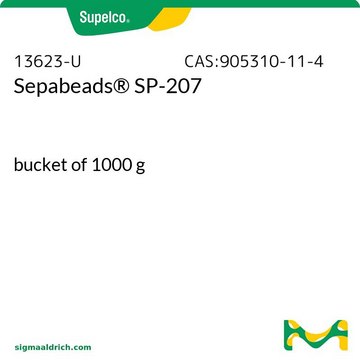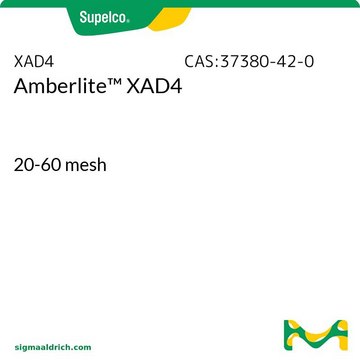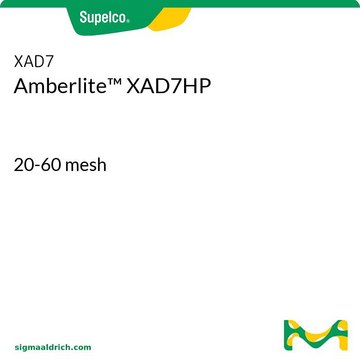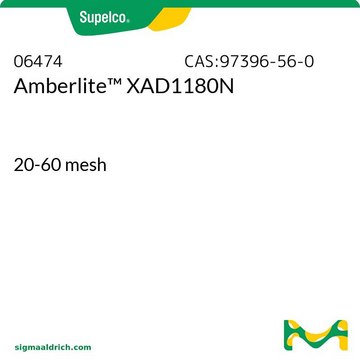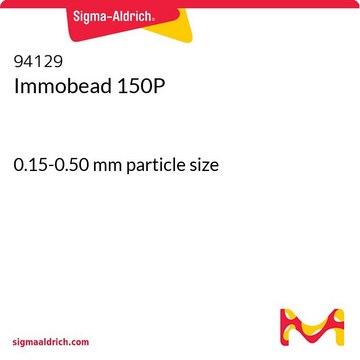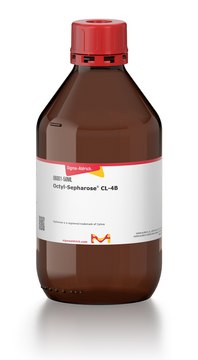Recommended Products
form
solid
packaging
pkg of 1000 g
technique(s)
LPLC: suitable
matrix
styrene-divinylbenzene
particle size
20-60 mesh
250-600 μm (fines removed)
pore size
~1.40 mL/g pore volume
90-125 Å mean pore size
density
1.01 g/mL at 25 °C (true wet)(lit.)
General description
Sepabeads® SP825L is a polymeric non-ionic polystyrene-divinylbenzene resin.
Application
Polyaromatic adsorbent resin for antibiotics, organics, decolorization; high capacity for small molecules. This resin has been classified and only requires equilibration before use.
Sepabeads® SP825L was used in the preparation of solid phase adsorption toxin tracking (SPATTs) and also to evaluate the polymeric resin properties.
Other Notes
Swelling in toluene = 19%
Legal Information
Sepabeads is a registered trademark of Mitsubishi Chemical Corp.
Storage Class Code
13 - Non Combustible Solids
WGK
WGK 3
Flash Point(F)
Not applicable
Flash Point(C)
Not applicable
Regulatory Information
新产品
Choose from one of the most recent versions:
Already Own This Product?
Find documentation for the products that you have recently purchased in the Document Library.
Cytoprotective effect of a bilberry extract against oxidative damage of rat hepatocytes.
Valentova, Katerina, et al.
Food Chemistry, 101, 912-917 (2007)
Yueyang Huang et al.
Antimicrobial agents and chemotherapy, 63(4) (2019-03-29)
Staphylococcus aureus is a leading cause of infection in the United States, and due to the rapid development of resistance, new antibiotics are constantly needed. trans-Translation is a particularly promising antibiotic target because it is conserved in many bacterial species
Field and mesocosm trials on passive sampling for the study of adsorption and desorption behaviour of lipophilic toxins with a focus on OA and DTX1
Fux, Elie, et al.
Harmful Algae, 7, 574-583 (2008)
Our team of scientists has experience in all areas of research including Life Science, Material Science, Chemical Synthesis, Chromatography, Analytical and many others.
Contact Technical Service
